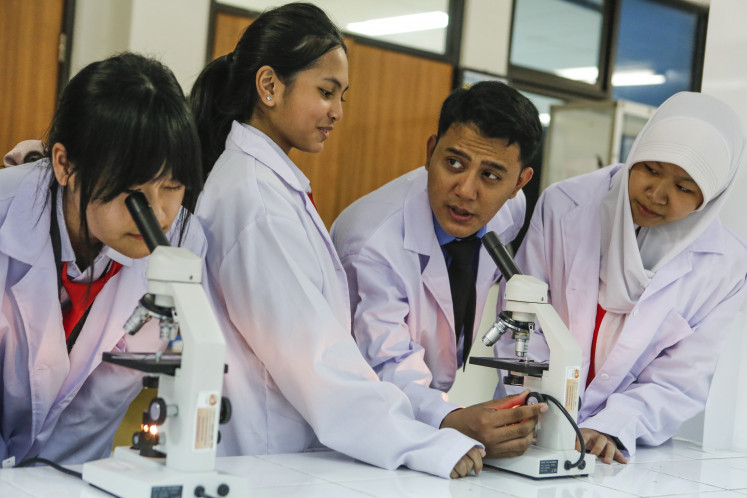Popular Reads
Top Results
Can't find what you're looking for?
View all search resultsPopular Reads
Top Results
Can't find what you're looking for?
View all search resultsHuman fossils, 300,000 years older than Sangiran man, found
The Yogyakarta Archaeological Center has reportedly found fossils of Homo erectus near the Glagah River in Bumiayu subdistrict, Brebes, Central Java, estimated to be 300,000 years older than the erstwhile oldest archaic human fossils ever found in Indonesia
Change text size
Gift Premium Articles
to Anyone
T
he Yogyakarta Archaeological Center has reportedly found fossils of Homo erectus near the Glagah River in Bumiayu subdistrict, Brebes, Central Java, estimated to be 300,000 years older than the erstwhile oldest archaic human fossils ever found in Indonesia.
The team of archeologists estimated that the fossils were around 1.8 million years old, or about 300,000 years older than the Sangiran man’s fossils, which are estimated to date back to 1.5 million years ago and until now has been believed to be the oldest. This finding makes the Bumiayu fossil the oldest archaic human that has ever been found not only in Java but also in Indonesia.
“We have just finished our research on this finding with our team that consists of 10 experts on archaic human experts, artifact experts, geologists, paleontologists, IT graphic design experts and other experts,” the team leader, Harry Widianto, told The Jakarta Post on Friday.
Harry said the team received information about the fossils from people in Bumiayu who told the Sangiran Ancient Human Museum in Sragen, Central Java that they had found several fossils in their area.
“We then started our research there last week,” he said.
They found three thigh bones, one fracture of a lower jaw, along with the root of teeth and a piece of a femur. The Homo erectus that they found was 170 centimeters tall.
“This finding in Bumiayu is different from the fossils found in Sangiran, Central Java, which were 1.5 million years old. What we found in Bumiayu is from the Homo erectus group, its development was based on local evolution, which we call multiregional,” he said.
The Brebes administration welcomed the finding with a plan to build an “international museum” to house the fossils. Lusiana Indira Isni, administration spokesperson, told the Post on Friday that her side would coordinate with the central government on follow ups to the finding.
“We fully support this finding and we will discuss the land [for the museum], and the design,” she said.
“We’re hoping that this finding can be used as a knowledge and research asset as well as that of tourism in Brebes,” she went on.
Harry said Bumiayu in Brebes had been a well-known research site among archaic researchers since the 1920s. The archaeological team leader said the area from Bumiayu to neighboring city Tegal was Java Island’s east coast.
Later, to the west appeared what we know as West Java, and then land grew and widened to form what we know today as Central and East Java. Harry said traces of life in Bumiayu were older than that in today’s eastern Java.
Besides archaic humans, the researchers found several fossils in Bumiayu, including that of an archaic elephant, deer, bull and water buffalo.
Sangiran itself has been recognized by UNESCO as a world heritage in culture since 1996. Called Sangiran Early Man Site, the 5,600-hectare area has been known as “one of the key sites for the understanding of human evolution”. The fossils of the early man were found during excavation from 1936 to 1941.










